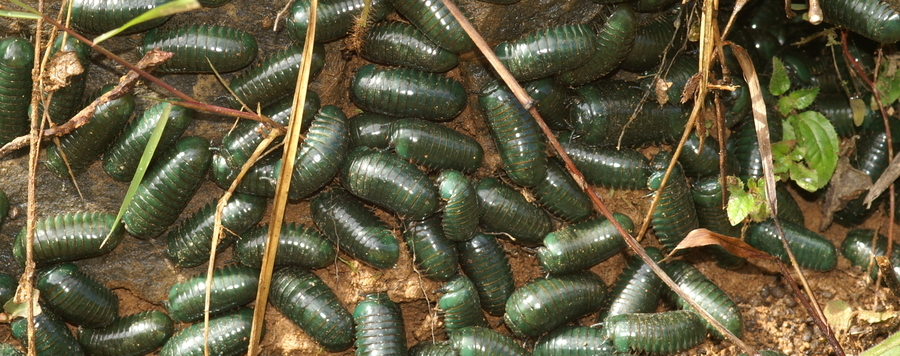
Giant pill-millipede Swarm
The first records of mass occurrences (swarming behaviour) in giant pill-millipedes, order Sphaerotheriida, are reported from Madagascar. Swarming behaviour in the order Sphaerotheriida seems to be restricted to a single of more than sixty described Malagasy species, Zoosphaerium neptunus (Butler, 1872), which is the world’s largest known giant pill-millipede. Rolled-up individuals can be up to the size of a baseball, tennis ball or small orange, but only females reach this giant size, males being smaller than a ping-pong ball. Nine occurrences of such Z. neptunus swarms were analyzed based on actual specimens, video or photographic evidence collected by other researchers, dating back as far as 1892. One additional swarm, comprising several thousand individuals was examined in detail, with 260 randomly collected specimens being dissected and measured. The findings highlight that the swarming behaviour in Z. neptunus differs from that of all other millipedes in two important details: (1) The individual swarm is restricted to specimens of a single related size (and presumably age) class; often only sexually immature individuals; (2) the swarming behaviour is obligate, most, if not all specimens of the species in a given area participate in such swarms; Z. neptunus specimens are rarely, if ever, not found in a swarm. Reasons behind such massing events in millipedes are currently little understood, but a potential explanation for the mass occurrences in Z. neptunus might be higher survival rate from predation in combination with a close si bling relationship between members of one swarm. The almost obligate swarming behaviour in the widespread Z. neptunus species might represent a conservation problem, since whole swarms, and therefore a whole generation in a given area, can be lost through anthropogenic interferences such as over-collecting for the pet trade, habitat fragmentation or road kills.






